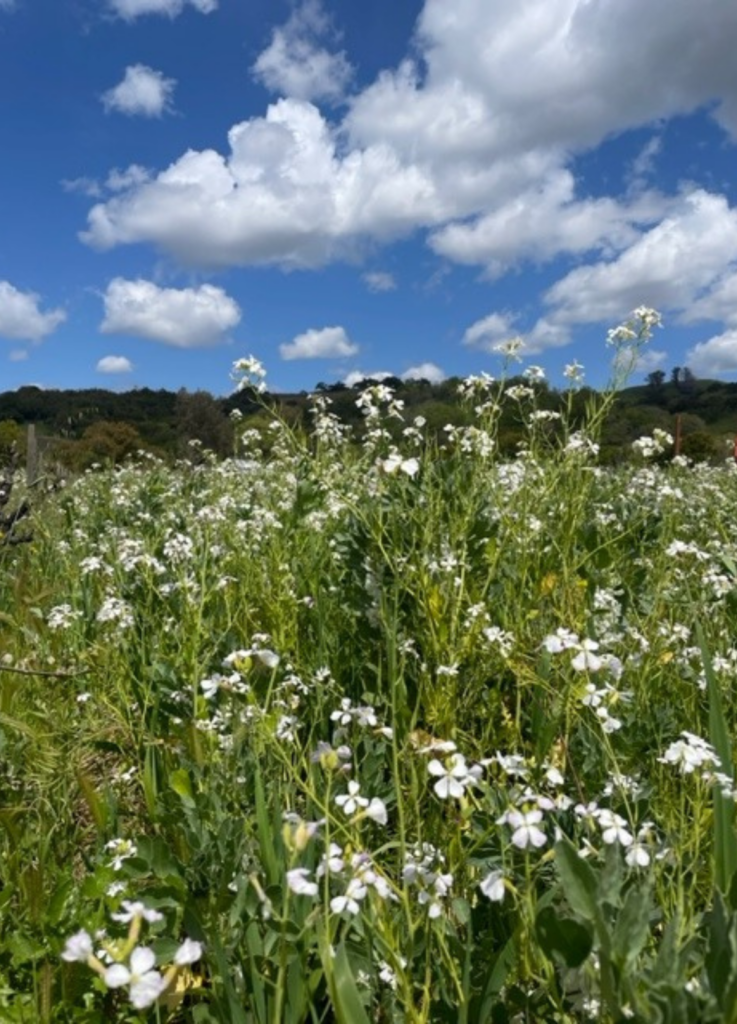THINK WHILE YOU DRINK: Spring In The Vineyard
May 2023

It’s been a long, wet, cold winter and spring, with over 50 inches of rain recorded — quite a bit above normal. The rain has fallen steadily for quite some time, which means it’s been green now for months (and still is).
If you’ve visited wine country during early spring, you may have noticed grasses and flowers growing between the vineyard rows. Weeds? Wildflowers? Actually, no. This is the cover crop. Cover crops are purposefully planted to do a lot of fun and interesting things to the vineyard. When they flower, it’s absolutely beautiful. (And this spring, the cover crops have been off the hook, waist high and blooming like crazy.)
But they don’t just sit there looking pretty – they do a laundry list of cool things: including increasing soil organic carbon (SOC), improving water infiltration and aggregate stability, and reducing erosion and greenhouse gas emission to the atmosphere. (do we sound smart?) They also increase biodiversity, both in soil and the vineyard. They’re a critical part of sustainable viticulture. After we enjoy their beauty for a few weeks, the sad day comes when the plants are tilled. This is important, too – they start to decompose and work even more magic in the soil of the vineyard.
This year, the heavy rain has created the most beautiful blooming season we’ve ever seen. Mustard flowers, poppies, sweet peas, radish blossoms, fava bean flowers, chamomile… it is so pretty, it almost looks fake. Awe-inspiring for sure. (This is a good opportunity to remind you to pay us a visit. Nothing beats wine tasting in Healdsburg right now. Except maybe a picnic. That can be arranged, too!)
But spring’s biggest event is always budbreak. It’s the birth of the vintage – when new shoots and leaves appear on the vines. The “bud” refers to everything that will become the new growth of the plant.
It’s been a long time coming, but the 2023 bud break has finally happened, at least 3 weeks behind normal. What is normal these days? Hmmm. After several early harvests, the pendulum has swung in the other direction completely. We used to say September 10th was predictably the first big day of harvest. Over the last several years, by Labor Day weekend we’re inundated with grapes. This year, the cold, long winter means it could be late September before we’re really in gear, and close to Thanksgiving before we’re done. (The most comparable year in recent memory is probably 2011)
What does this mean for the grapes? We’ll have to see how the summer unfolds. As usual, our biggest concern is any fire and/or smoke once the grapes are undergoing veraison. With all the rain, the vegetation currently has very high moisture levels. The rain has also meant a lot of plant growth that, once dry, could become heavy amounts of fuel for any fire. We’re hoping for a moderate summer that keeps that moisture around as long as possible. Keep your fingers crossed!

